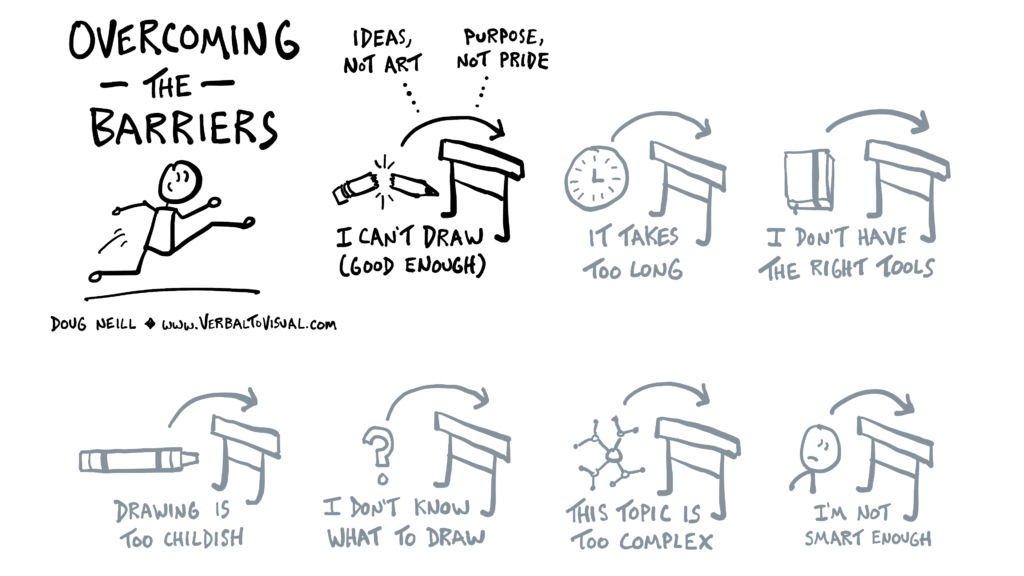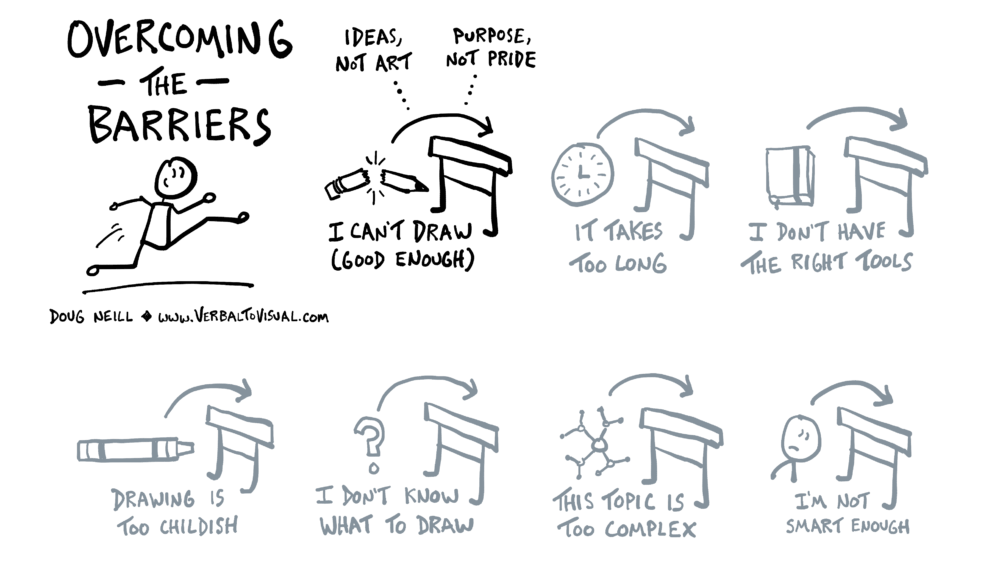Recently I’ve been thinking about the barriers that keep us from making marks on the page, even when we know those marks will be helpful.
One of the biggest that I bump into is this: I can’t draw (good enough).
Maybe you’ve felt this too. You’re in a meeting that’s going in circles, and you know a simple diagram would get everyone on the same page. But you don’t sketch it out because you’re worried it won’t look professional.
Or you’re reading a good book, and you can feel the ideas slipping away even as you turn the page. You know that sketching out the key concepts would help you remember them, but you hesitate because your drawings feel too rough, too childish.
Here’s what I want to offer as an antidote to that hesitation: Purpose, not pride.
Don’t let your pride get in the way of deeper understanding through a simply drawn model. Don’t let your ego prevent you from having a good conversation because you’re worried about sharing a super rough sketch.
Mike Rohde captured this beautifully with his phrase “Ideas, not art.” I want to build on that with a trio of reminders:
Ideas, not art. Purpose, not pride. Impact, not aesthetics.
Whenever you feel your pride creeping up and taking control of the situation, revisit your purpose. Let that be your compass. Remind yourself why you’re choosing to engage with visual thinking in the first place.
When you focus on your purpose, the concern over your drawing skills fades to the background. You remember that it’s not about the quality of the drawing. It’s about the depth of your understanding, the quality of your conversation, or your ability to connect with an audience.

Here’s the thing: even if your audience doesn’t particularly like your drawings, they might appreciate how you talk about the topic when you have those sketches with you. Even if those rough visuals are just a reference for you – something to help you bring the energy and clarity you need when sharing ideas – that’s still a win.
The model you create isn’t meant to be framed and hung on the wall. It’s meant to serve its purpose within the project you’re working on. Focus on the role it plays, not what it looks like as a standalone piece of art.
So the next time you catch yourself thinking “I can’t draw good enough!” try shifting to “What’s my purpose here?”
The answer to that question will show you the way forward.
Cheers,
-Doug
P.S. The “I can’t draw” barrier is one of seven barriers to visual thinking that I address early within The Verbal to Visual Curriculum. I’ll help you tackle all seven so that you can start weaving this skill into your life and work.
